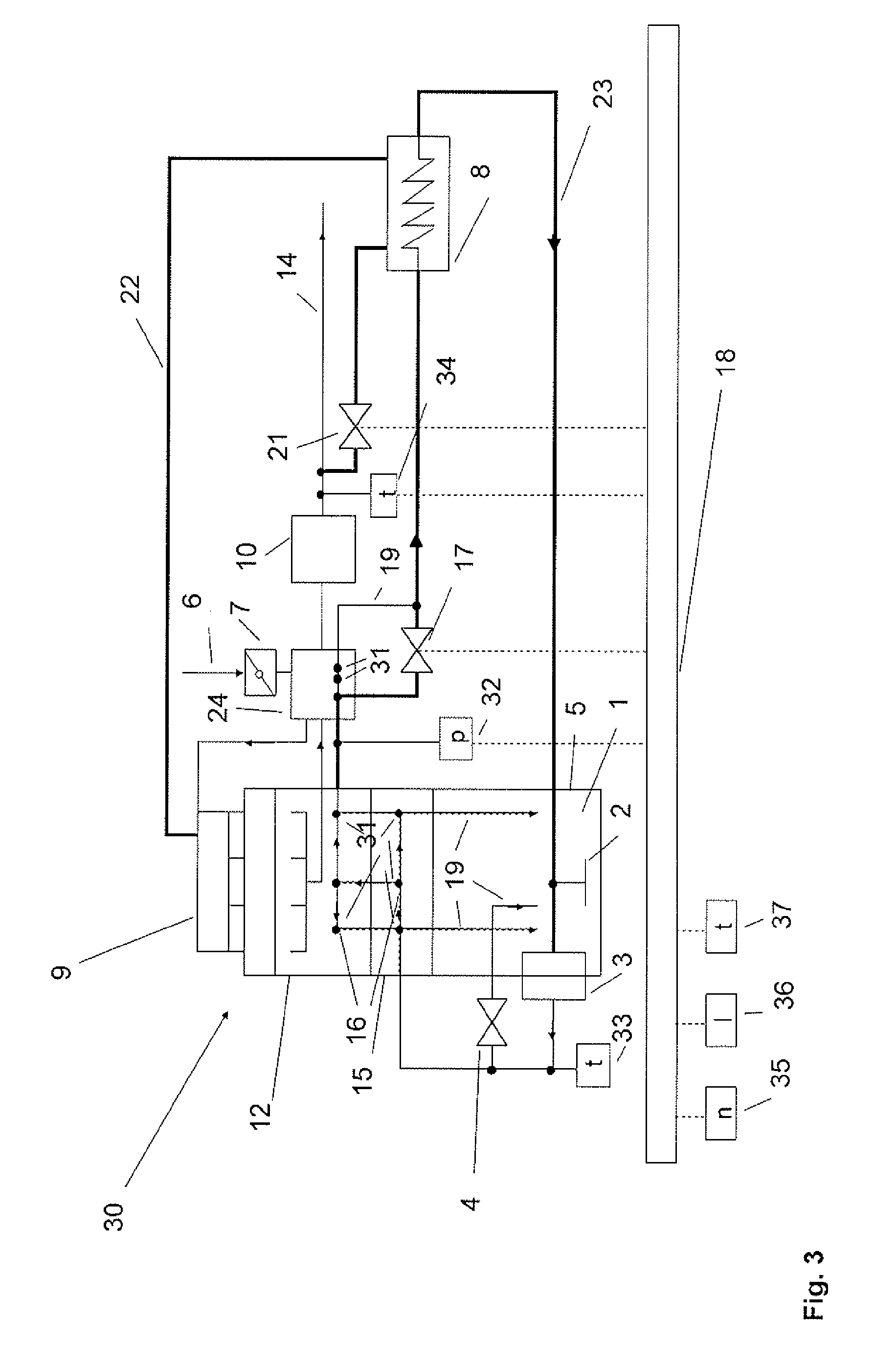Method and apparatus for oiling rotating or oscillating components
a technology of rotating or oscillating components and heating methods, which is applied in the direction of engine components, lubrication temperature control, pressure lubrication with lubrication pump, etc., can solve the problem of small reduction in fuel consumption, major exhaust emissions, and inconvenient routing of oil bypass lines for raising the temperature more quickly, so as to increase the heating effect
- Summary
- Abstract
- Description
- Claims
- Application Information
AI Technical Summary
Benefits of technology
Problems solved by technology
Method used
Image
Examples
Embodiment Construction
[0040]FIG. 1 depicts a combustion engine 30 in a schematic representation. The combustion engine 30 comprises an exhaust line 14 in which a catalytic converter 10 is disposed. In the exemplary embodiment shown the combustion engine 30 is depicted as a four-cylinder engine whose four cylinder manifolds merge into a common exhaust gas line 14.
[0041]Seen in the exhaust gas flow direction of the exhaust gas, a heat exchanger 8 is disposed in the exhaust gas line 14 downstream of the catalytic converter 10, and a turbocharger 24 is disposed upstream of the catalytic converter. The combustion engine 30 comprises a lubricating oil system 16. The lubricating oil system comprises an oil sump 1, an oil suction tube 2, an oil pump 3, devices 31 to be lubricated of a cylinder head 12 and of a cylinder block 15 and of a turbocharger 24, oil pan 5, as well as an oil relief pressure valve 4.
[0042]Moreover, a bypass valve 17 is assigned to the lubricating oil system 16. The bypass valve 17 regulate...
PUM
 Login to View More
Login to View More Abstract
Description
Claims
Application Information
 Login to View More
Login to View More - R&D
- Intellectual Property
- Life Sciences
- Materials
- Tech Scout
- Unparalleled Data Quality
- Higher Quality Content
- 60% Fewer Hallucinations
Browse by: Latest US Patents, China's latest patents, Technical Efficacy Thesaurus, Application Domain, Technology Topic, Popular Technical Reports.
© 2025 PatSnap. All rights reserved.Legal|Privacy policy|Modern Slavery Act Transparency Statement|Sitemap|About US| Contact US: help@patsnap.com



